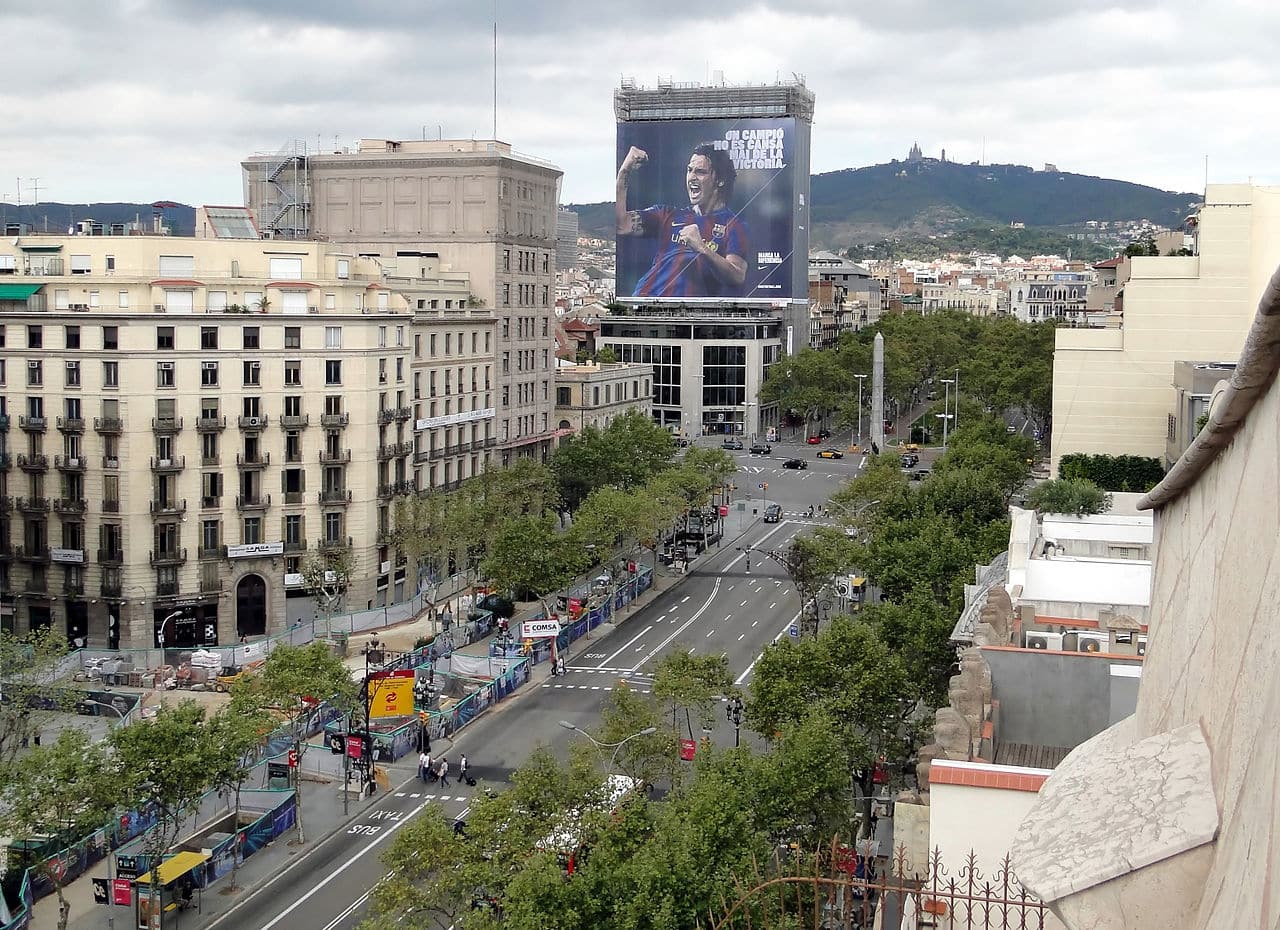
You ask yourself what to see in Paseo de Gracia, Barcelona? Perhaps you are thinking of visiting Barcelona and you know that it is one of its great boulevards. It measures just over a kilometer and a half long by sixty-one wide and, during the last years of the XNUMXth century and the beginning of the XNUMXth, it was the favorite place for the Catalan bourgeoisie to build their homes.
Perhaps because of that prestige, it is the third most expensive road in Spain in terms of rentals. It is only surpassed by Calle Preciados in Madrid and Avenida de la Puerta del Ángel in the same Barcelona. As its name indicates, connects the Gracia neighborhood with Plaza Catalunya. But, more importantly, it is a real modernist architecture showcase. For all these reasons, it is an essential visit if you travel to Barcelona and we are going to explain what to see in Paseo de Gracia, Barcelona.
Layout and urban decoration
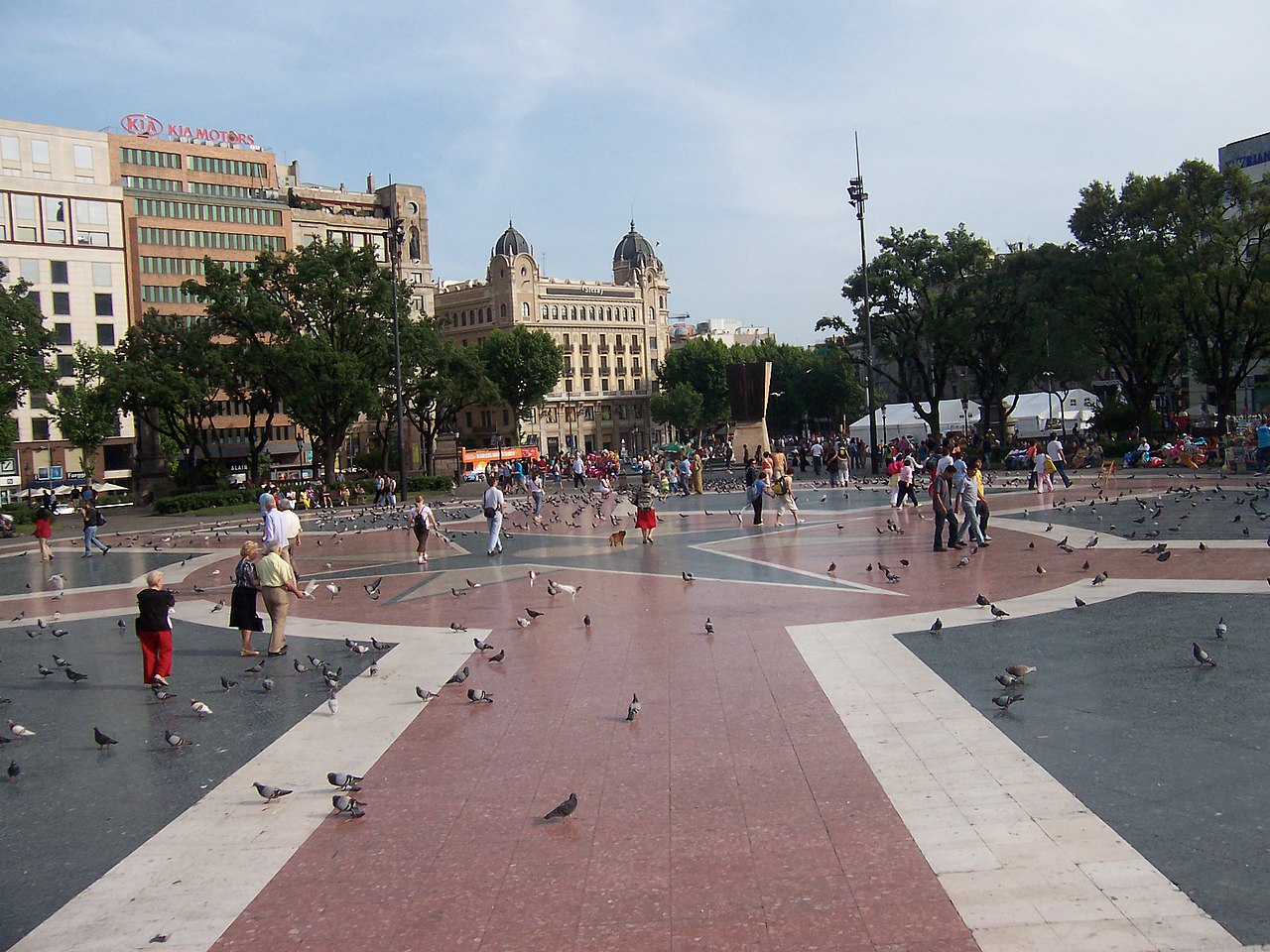
Plaza Catalunya, where Paseo de Gracia begins
Paseo de Gracia is part of the so-called Barcelona expansion with which the city was opened outside its ancient walls. Previously, it was the Jesus way, which was, like now, until Gracia. But, then, this was independent of the urban area. The original promenade was inaugurated in 1827 and was quickly adopted as a meeting place for the Barcelona bourgeoisie.
Already at the end of the XNUMXth century, the Ensanche that we have mentioned was developed, due to the urban planner Ildefonso Cerda. And Paseo de Gracia became one of its axes, with cafes, restaurants and theaters. However, as we have also mentioned, it soon became the favorite space of the bourgeoisie to build their spectacular houses.
However, the ride itself is a work of art. Its pavement was designed by Antonio Gaudi, who, as we shall see, also built several buildings in the area. Likewise, the lampposts are due to the talent of the architect Pere Falques, which also created banks. The latter respond to the technique of trencadis, widely used in Catalan modernism. It consists of covering the surface with ceramic fragments of different sizes and colors. Another example of it that you can see in Barcelona is in the Park Güell.
On the other hand, at present, Paseo de Gracia has also become the area where the big luxury brands in Barcelona. Also, as a good tourist street, there are plenty of bars, cafes and restaurants with terraces. But the time has come for us to talk to you about what to see in Paseo de Gracia, Barcelona, in terms of its architecture.
Casa Mila or La Pedrera
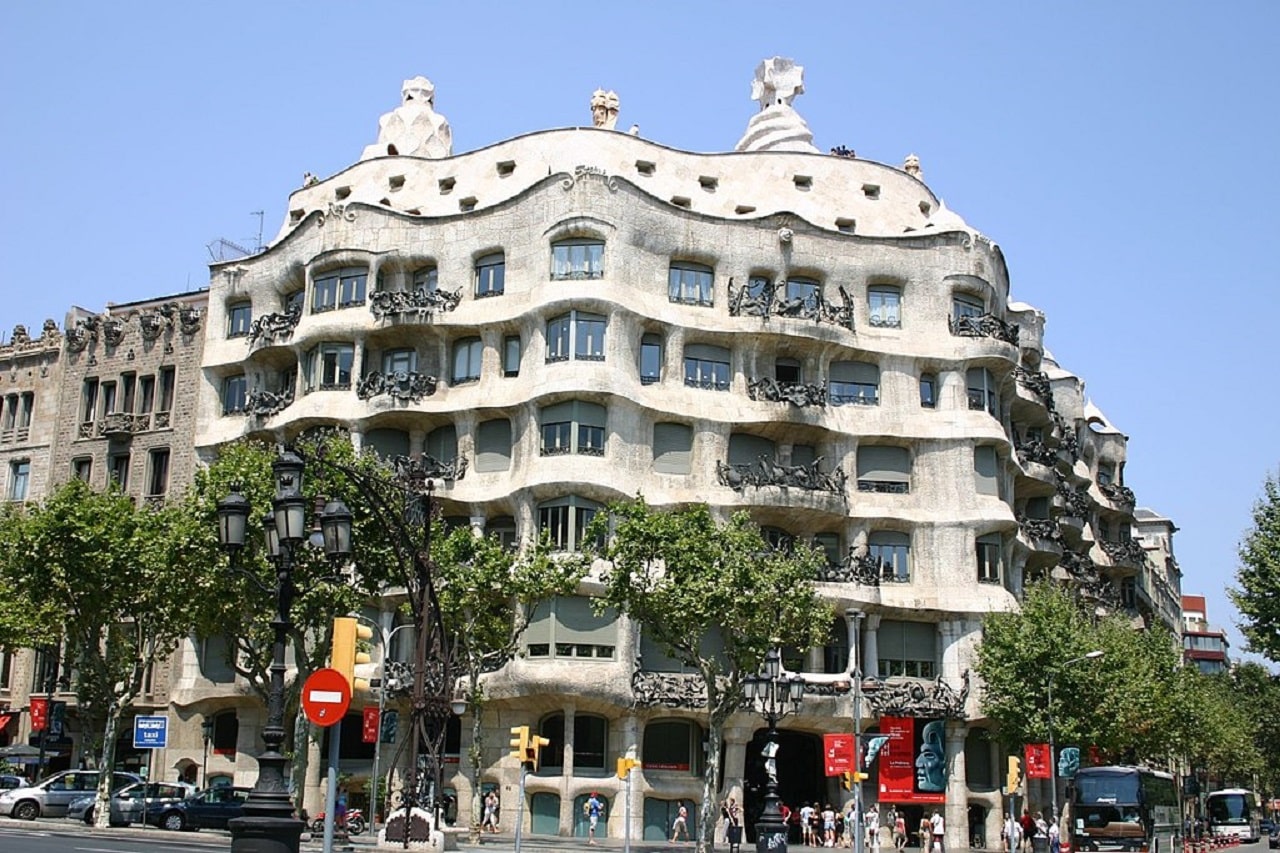
Casa Milá, one of Gaudí's works on Paseo de Gracia
There are so many that it would be impossible for us to mention all the architectural wonders that you can see on this tour. Therefore, we will explain only some of the most important ones. And we will start with what is perhaps the best known and most spectacular.
We refer to the Casa Milá, also known as La Pedrera, which is one of the most emblematic buildings in the city. Like other great houses, it was due to the unmatched talent of Antonio Gaudi and was built between 1906 and 1910. It is located at number 92 Paseo de Gracia and is a perfect example of the fullness of the Catalan genius.
belongs to your naturalistic stage, when Gaudí optimized his style and based it on the forms of nature. Breaking with all classicism, he explores new curved and sinuous structural lines. Also, he develops a baroque ornamentation based on those same forms and on numerous decorations such as tiles, ceramics, fireplaces and even religious details.
As a result, he obtained one of the most spectacular buildings in Barcelona. It is no coincidence that, since its opening to the public in 1987, it has received over twenty million views.
House Bonaventura Ferrer
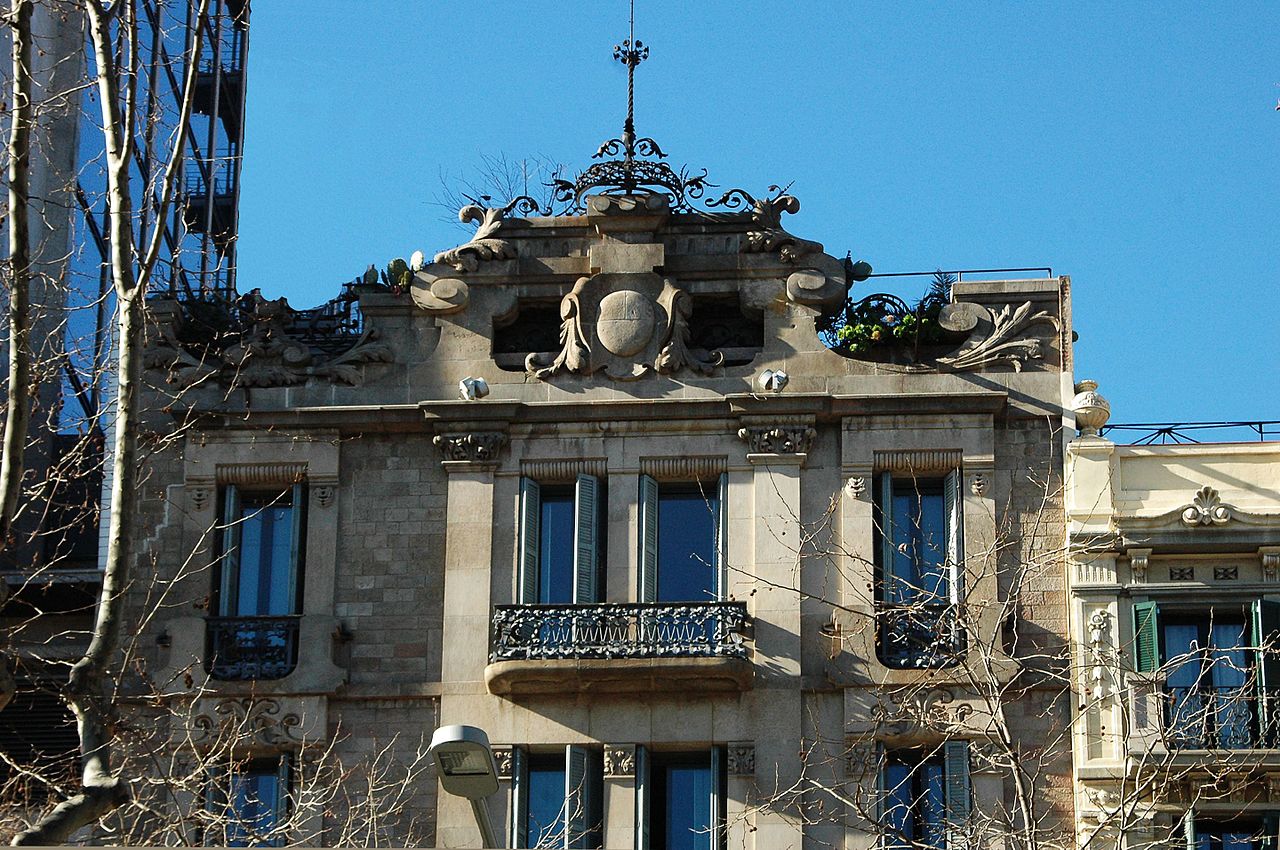
Casa Bonaventura Ferrer, another of the wonders to see in Paseo de Gracia, Barcelona
Pere Falqués was not satisfied with designing the benches and lampposts of Paseo de Gracia. I also contribute buildings like this. It is located at number 113 of the street and was also built in 1906. It is also known as "The Palace" and was restored a few years ago to become a luxury hotel.
In style modernistIt has a ground floor, main floor, three floors and a roof terrace with a spectacular skylight. Vertically, it has three bodies in which the central one stands out with a large hole in the bottom. It also has wrought iron balconies and baroque decoration on the highest part.
The rear area of the house opens to the River San Miguel and it has a ground floor on which there is a spectacular terrace with trencadis of white marble and a semicircular tribune of iron, wood, ceramics and even glass.
Fuster House
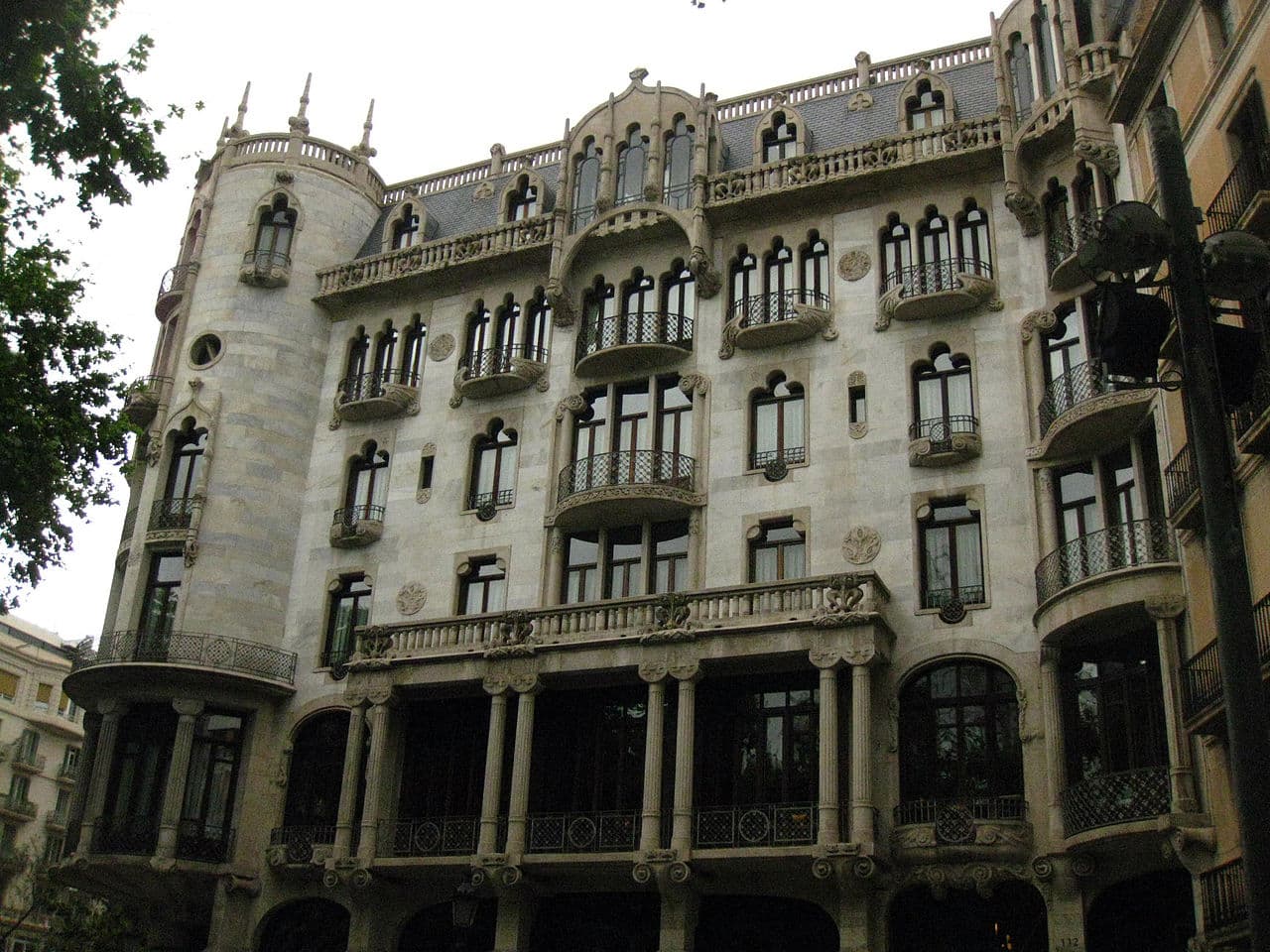
Fuster House
We continue our tour of what to see in Paseo de Gracia, Barcelona, at Casa Fuster. This is due to the talent of Lluis Domènech i Montaner, who built it between 1908 and 1910. You will find it at number 132 on the Paseo, on the corner of the Diagonal.
Like the vast majority of the buildings on this street, it belongs to the style modernist. It presents monumental containment, which can be seen in the harmony of its two facades separated by a bullfight which, as we go up the floor, transforms into tower. Finally, the construction is finished with attics or French-style roof windows.
Casa Amatller, maximum originality among what to see in Paseo de Gracia, Barcelona
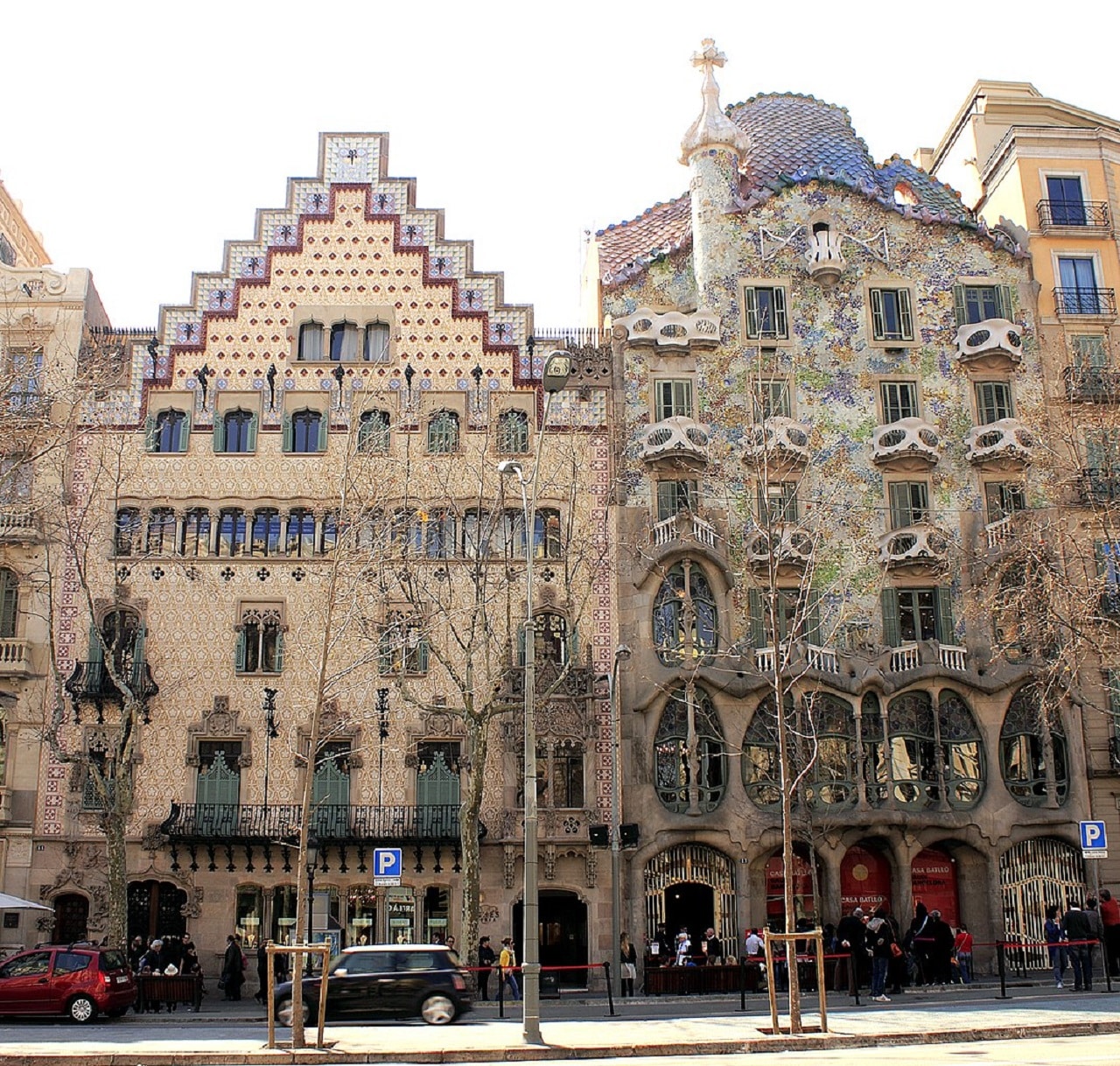
The original Casa Amatller
If modernism was already original, we could say that Casa Amatller takes the cake among what to see in Paseo de Gracia, Barcelona. Because its façade surprises as much as it impresses. It is spectacular and is inspired by the northern european medieval architecture, with small continuous windows and other elements. But it also takes features of Flemish architecture, Catalan Gothic and even Romanesque. As if that were not enough, it ends in a staggered manner. And it is complemented by numerous ceramic and sculptural ornaments. even presents scrawled, a complex engraving technique of Italian origin.
The house was due to the genius of the architect Josep Puig i Cadafalch, who built it between 1898 and 1900 for the Amatller family, dedicated to the chocolate industry. It was declared, like many others on Paseo de Gracia, Historic Artistic Monument and currently hosts the Amatller Institute of Hispanic Art.
Casa Batlló, Gaudí's genius again
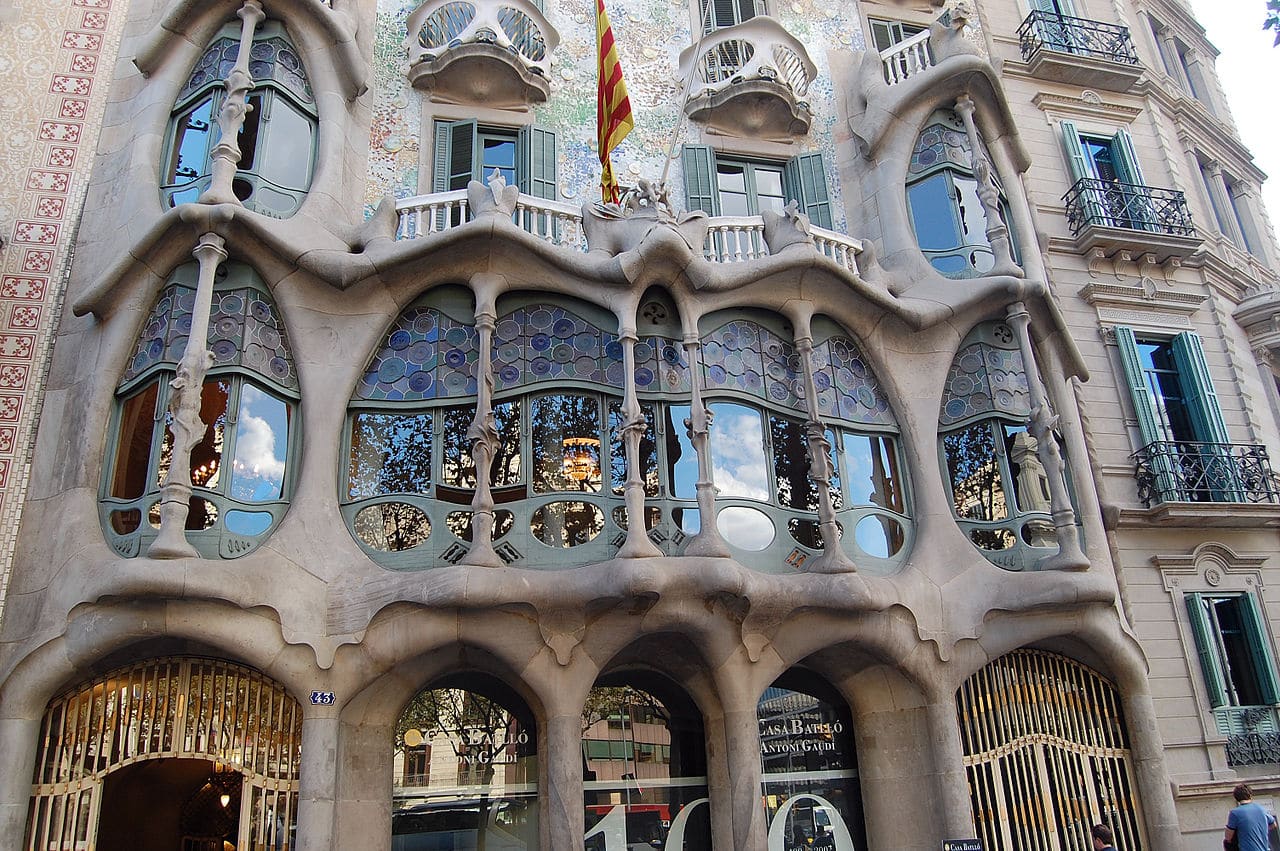
Facade of Casa Batlló, another work of art by Gaudí
So abundant and spectacular is the work of Gaudí in Barcelona that we have to return to it to continue talking about what to see in Paseo de Gracia, Barcelona. Because now we come to Casa Batllo, another of his geniuses. It is true that, in this case, it was a remodeling, but the result has nothing to do with the original building.
It is located at number 43 on the promenade, next to Casa Amatller. Perhaps it is the area where more monuments are concentrated, since, in a few meters, you also have the houses Lleó Morera, Mulleras, Enric Sagnier and Josefina Bonet.
Batlló also responds to the naturalistic stage of Gaudi. This translates into his interest in recreating the forms of nature and in experimenting with geometry by creating curved and asymmetrical surfaces. On the façade, the main floor grandstand with five openings supported by eight columns and polychrome stained glass windows. Likewise, it is finished off by a frieze with vegetable sculptures.
It also highlights her coating with glass and ceramics of different colors that offers different visual effects depending on the place from which the sun hits it. Finally crowns the building a vault with catenary arches also covered with ceramics reminiscent of a dragon.
Ramón Casas-Carbo House
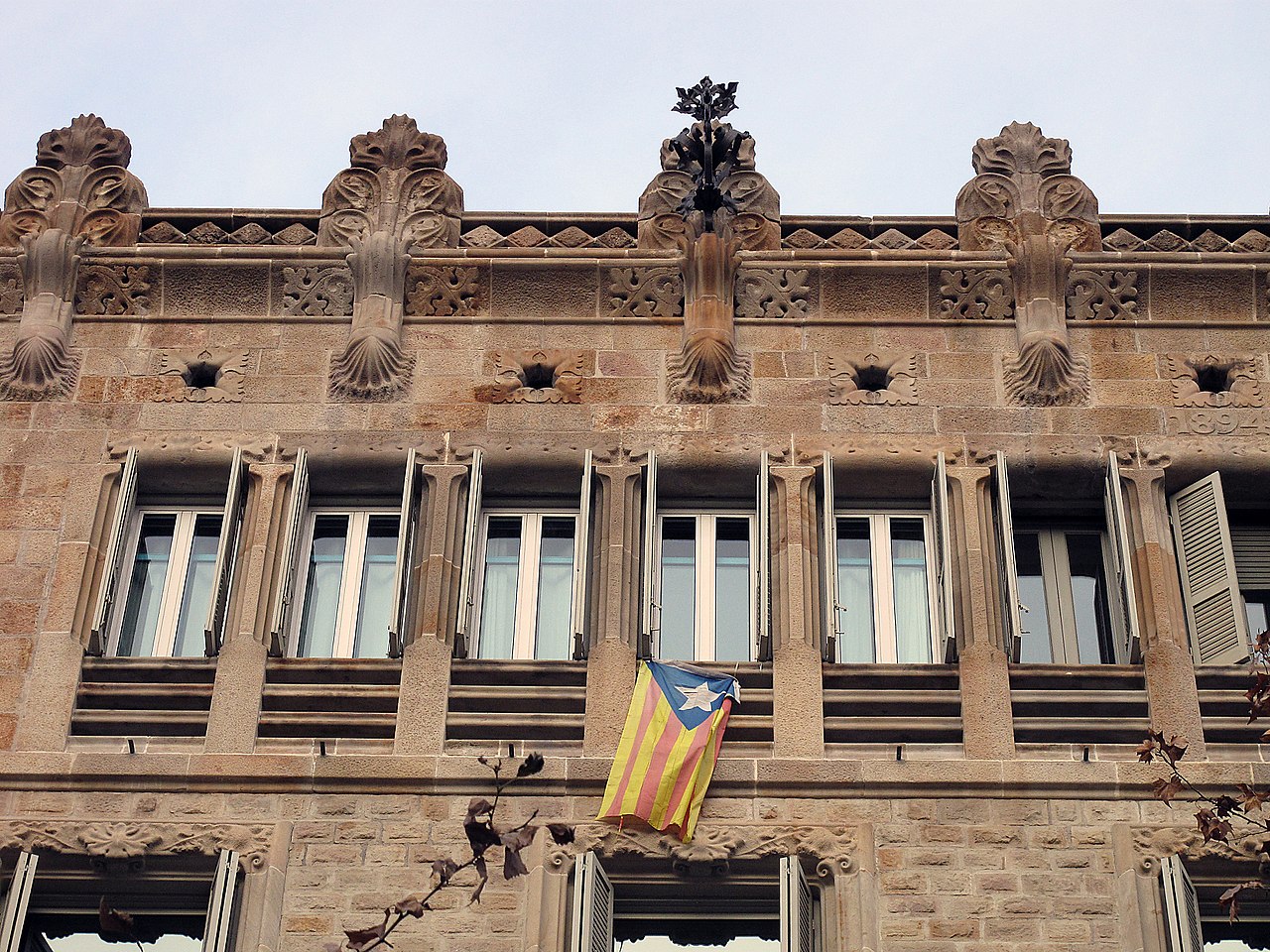
Detail of the House of Ramón Casas-Carbó
This construction was commissioned in 1898 to the architect Antony Rovira by the painter Ramón Casas, owner of the estate. It is also from modernist style, although, in this case, with a deep classical component and medieval elements. You will find it at number 96 Paseo de Gracia.
The facade is built in carved stone and consists of ground floor and three floors. stand out in it los balcones lavishly decorated, while, on the top floor, continuous windows were placed. And, above this, the roof with a cornice and ornamental figures. Taken together, their shapes are more harmonics, but also less spectacular than those of other houses on the promenade.
Palau Robert
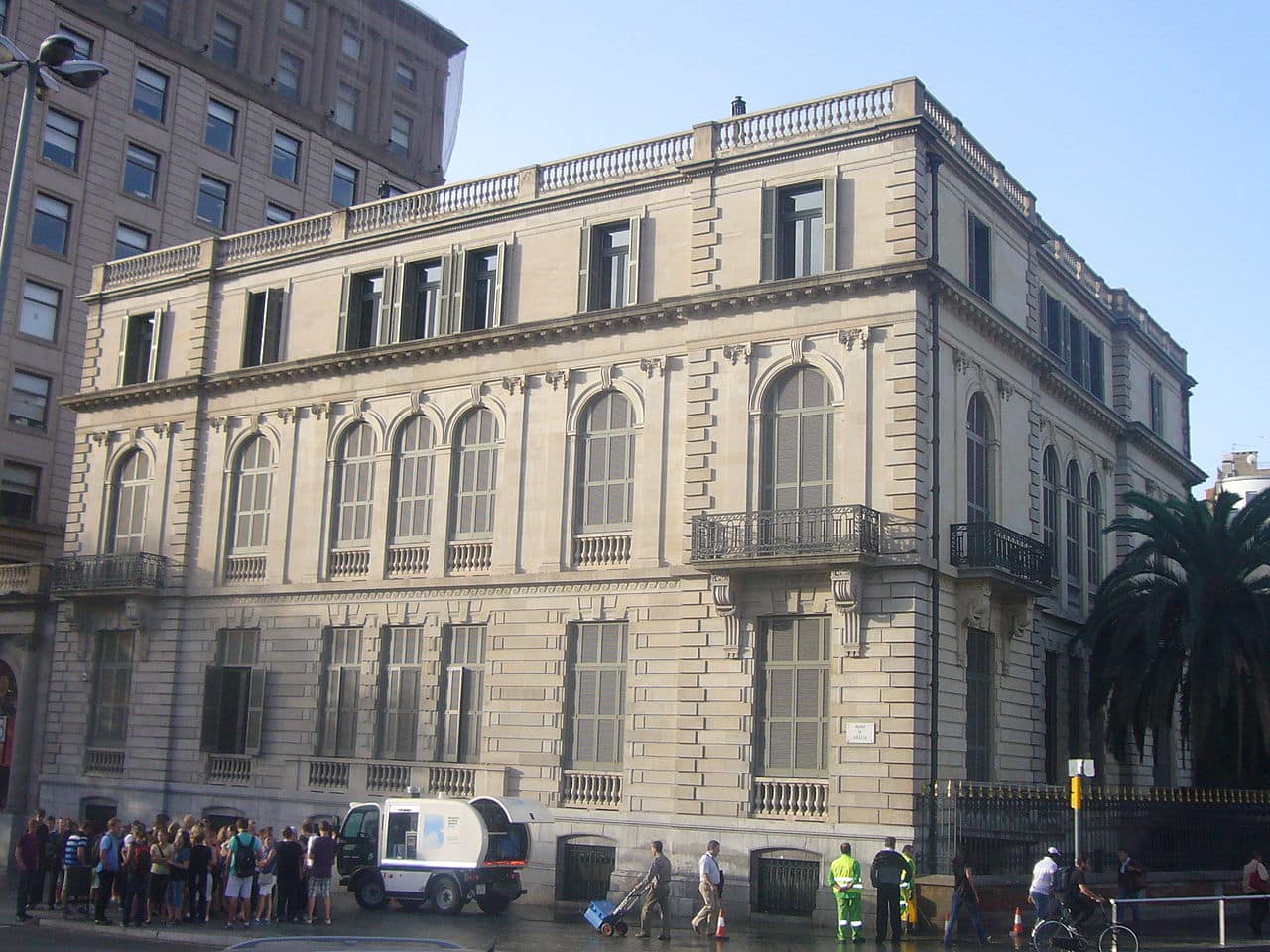
The Palau Robert
We finish our tour of what to see in Paseo de Gracia, Barcelona, in this 1903 building that is located at number 107 of the street. It was built for the residence of marquess of robert, prominent politician and financier of the time. The project was the work of French Henri Grandpierre, although the construction was managed by the architect Joan Martorell.
built with stone brought from the Montgrí massif, is a clear example of neoclassicist style, with its straight and harmonic forms. This feature distances it from the common modernism in the area. It has a rectangular floor plan that is organized around an interior patio covered with a skylight. It also had garages and a garden designed by Ramon Oliva, who was the municipal gardener. Currently, it belongs to the Generalitat, which has used it as an exhibition and concert hall.
In conclusion, we have shown you some of the jewels What to see in Paseo de Gracia, Barcelona. But, inevitably, we have left some in the pipeline. Among these, the houses Rocamora, Malagrida, Olano and Codina; the Palau-Marcet, former Comedy Cinema, and the The Union building and the Spanish Phoenix. Cheer up to visit Barcelona and go to Paseo de Gracia. You will not regret.